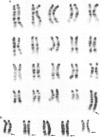Abstract
Sex-reversed XX male mice that carry the variant form of the testis-determining Sxr region, Sxr', do not express male-specific H-Y antigen. In a stock of mice segregating for Sxr', we detected an exceptional XX male that proved positive for H-Y antigen. DNA fingerprinting revealed that the banding pattern characteristic of Sxr' had been replaced by the pattern associated with the native testis-determining region of the normal Y chromosome of that stock, presumably by pairing and crossing-over between the two testis-determining regions of the father's Y Sxr' chromosome. Pairing between the two ends of such a chromosome in a loop-like configuration has been observed by electron microscopy. However, an anomalous crossing-over event of this kind would only give rise to the observed result if the native homologue of the Sxr region were situated on the very minute short arm of the Y chromosome. We therefore conclude that the two linked genes Tdy and Hya, controlling testis determination and H-Y antigen expression, respectively, are located on the short arm of the mouse Y chromosome.
Full text
PDF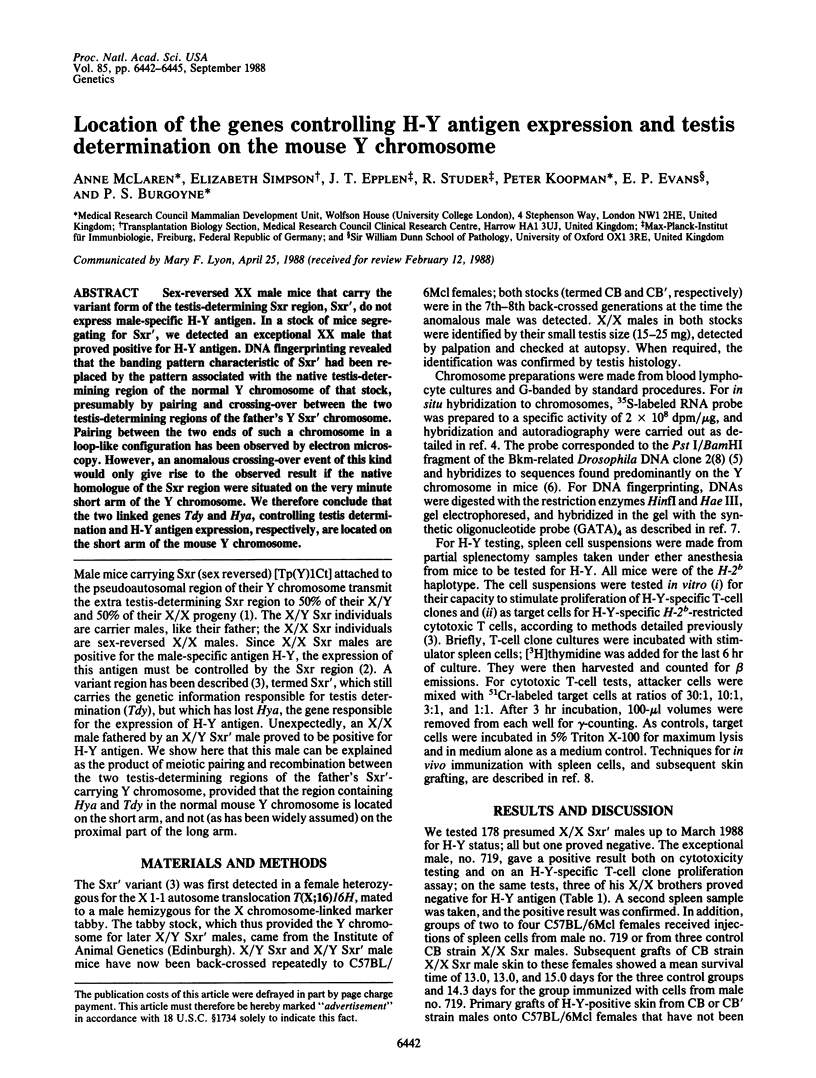
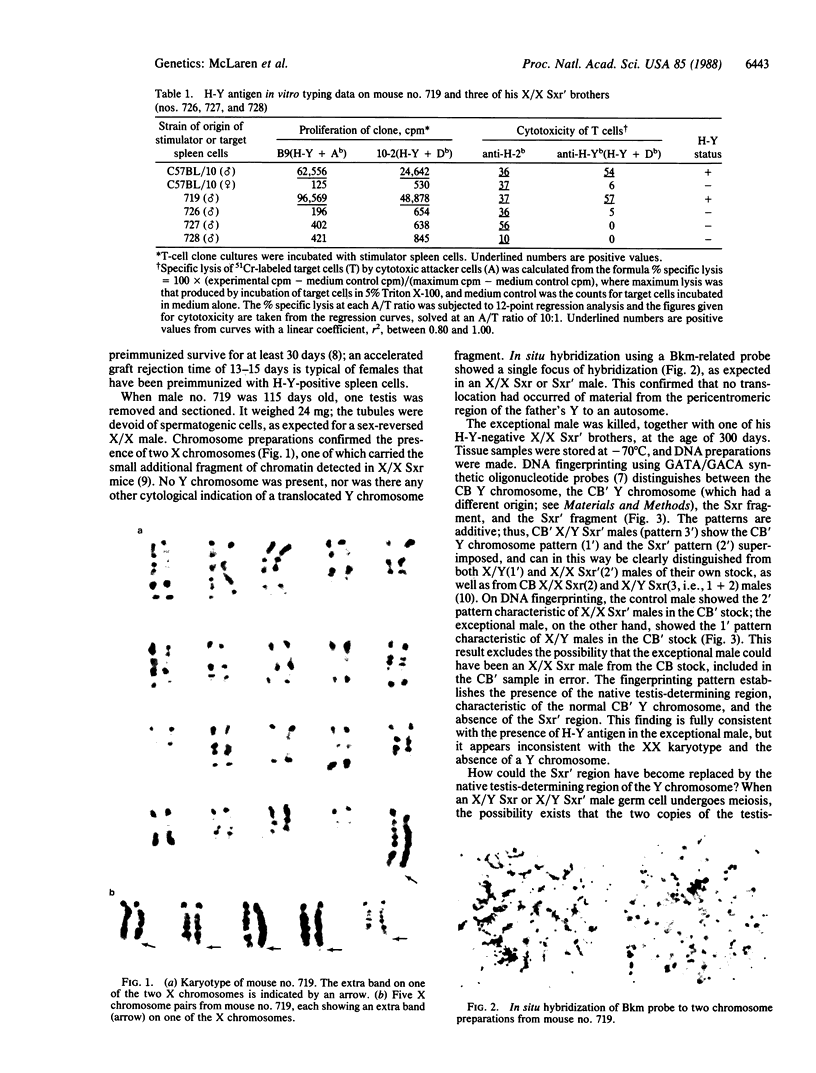
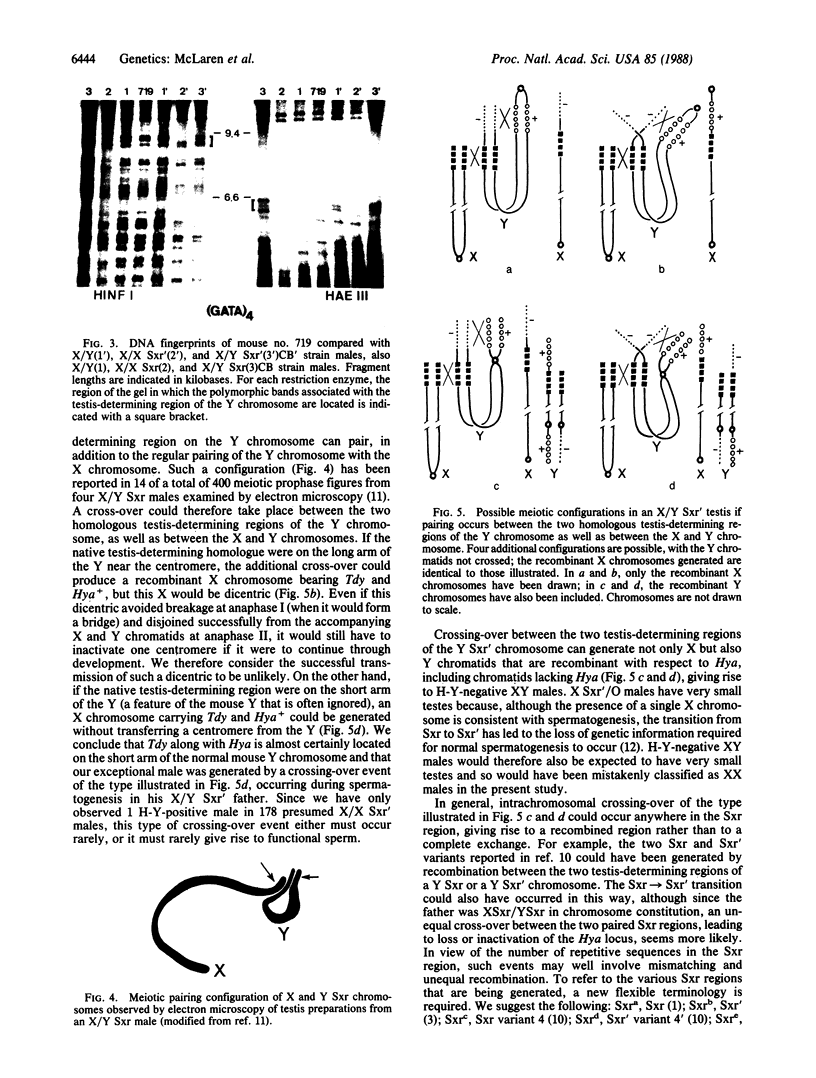
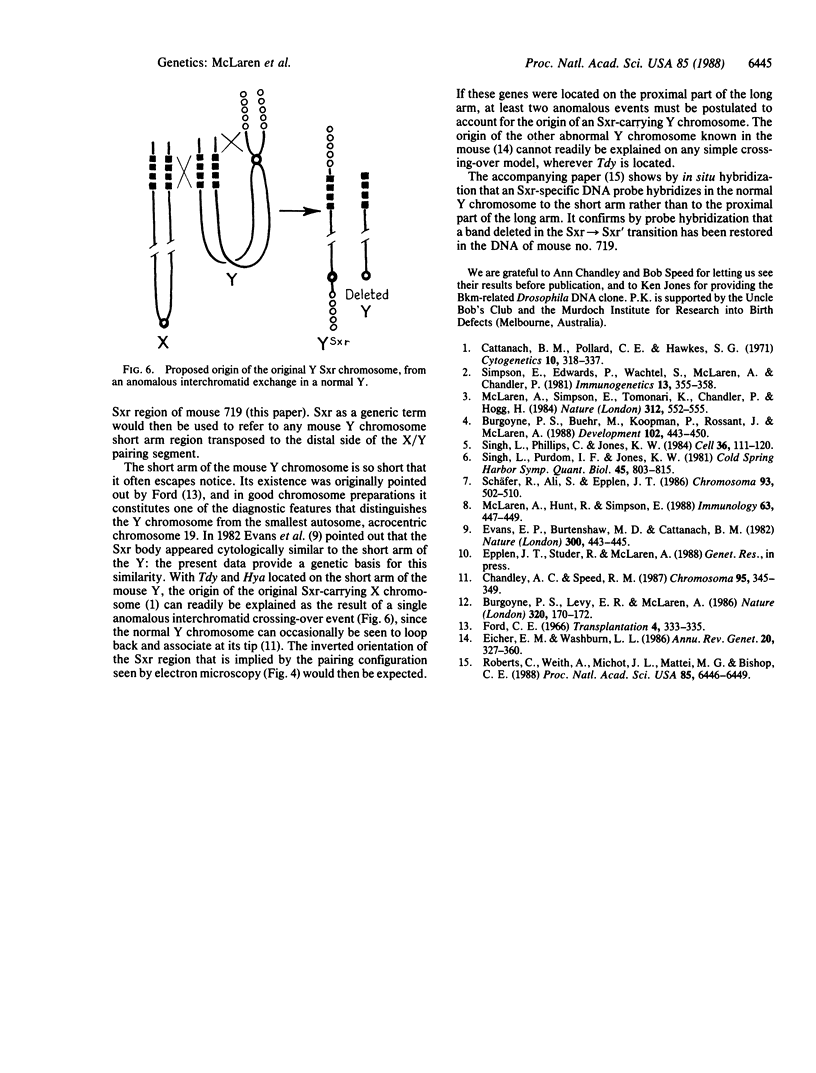
Images in this article
Selected References
These references are in PubMed. This may not be the complete list of references from this article.
- Burgoyne P. S., Buehr M., Koopman P., Rossant J., McLaren A. Cell-autonomous action of the testis-determining gene: Sertoli cells are exclusively XY in XX----XY chimaeric mouse testes. Development. 1988 Feb;102(2):443–450. doi: 10.1242/dev.102.2.443. [DOI] [PubMed] [Google Scholar]
- Burgoyne P. S., Levy E. R., McLaren A. Spermatogenic failure in male mice lacking H-Y antigen. Nature. 1986 Mar 13;320(6058):170–172. doi: 10.1038/320170a0. [DOI] [PubMed] [Google Scholar]
- Cattanach B. M., Pollard C. E., Hawker S. G. Sex-reversed mice: XX and XO males. Cytogenetics. 1971;10(5):318–337. doi: 10.1159/000130151. [DOI] [PubMed] [Google Scholar]
- Chandley A. C., Speed R. M. Cytological evidence that the Sxr fragment of XY,Sxr mice pairs homologously at meiotic prophase with the proximal testis-determining region. Chromosoma. 1987;95(5):345–349. doi: 10.1007/BF00293181. [DOI] [PubMed] [Google Scholar]
- Eicher E. M., Washburn L. L. Genetic control of primary sex determination in mice. Annu Rev Genet. 1986;20:327–360. doi: 10.1146/annurev.ge.20.120186.001551. [DOI] [PubMed] [Google Scholar]
- Evans E. P., Burtenshaw M. D., Cattanach B. M. Meitoic crossing-over between the X and Y chromosomes of male mice carrying the sex-reversing (Sxr) factor. Nature. 1982 Dec 2;300(5891):443–445. doi: 10.1038/300443a0. [DOI] [PubMed] [Google Scholar]
- Ford C. E. The murine Y chromosome as a marker. Transplantation. 1966 May;4(3):333–335. doi: 10.1097/00007890-196605000-00012. [DOI] [PubMed] [Google Scholar]
- McLaren A., Hunt R., Simpson E. Absence of any male-specific antigen recognized by T lymphocytes in X/XSxr' male mice. Immunology. 1988 Mar;63(3):447–449. [PMC free article] [PubMed] [Google Scholar]
- McLaren A., Simpson E., Tomonari K., Chandler P., Hogg H. Male sexual differentiation in mice lacking H-Y antigen. Nature. 1984 Dec 6;312(5994):552–555. doi: 10.1038/312552a0. [DOI] [PubMed] [Google Scholar]
- Roberts C., Weith A., Passage E., Michot J. L., Mattei M. G., Bishop C. E. Molecular and cytogenetic evidence for the location of Tdy and Hya on the mouse Y chromosome short arm. Proc Natl Acad Sci U S A. 1988 Sep;85(17):6446–6449. doi: 10.1073/pnas.85.17.6446. [DOI] [PMC free article] [PubMed] [Google Scholar]
- Schäfer R., Ali S., Epplen J. T. The organization of the evolutionarily conserved GATA/GACA repeats in the mouse genome. Chromosoma. 1986;93(6):502–510. doi: 10.1007/BF00386791. [DOI] [PubMed] [Google Scholar]
- Simpson E., Edwards P., Wachtel S., McLaren A., Chandler P. H-Y antigen in Sxr mice detected by H-2-restricted cytotoxic T cells. Immunogenetics. 1981;13(4):355–358. doi: 10.1007/BF00364502. [DOI] [PubMed] [Google Scholar]
- Singh L., Phillips C., Jones K. W. The conserved nucleotide sequences of Bkm, which define Sxr in the mouse, are transcribed. Cell. 1984 Jan;36(1):111–120. doi: 10.1016/0092-8674(84)90079-5. [DOI] [PubMed] [Google Scholar]



